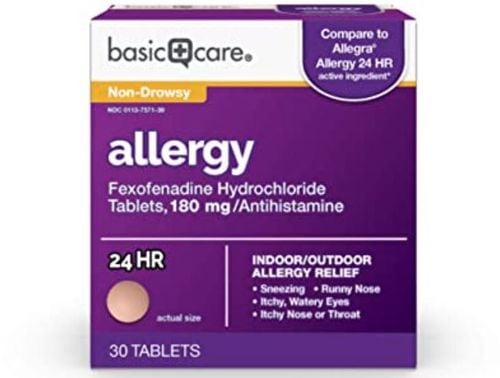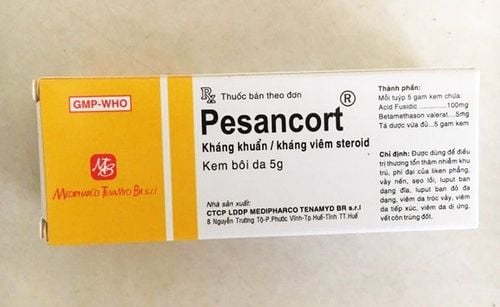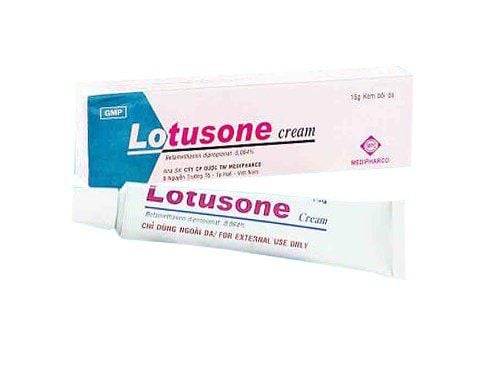This is an automatically translated article.
Lupus is an autoimmune disease that causes many dangerous complications for patients. Treatment of SLE with drugs is usually used in mild cases, for severe cases that are life-threatening, plasma exchange is the most effective method currently available.1. What is lupus erythematosus?
SLE on the human body such as joints, nervous system, kidneys, blood cells.According to studies, 1 in 2000 people is infected with lupus erythematosus, the rate of disease in women is 5 times higher than in men, the disease is mainly in the 15-40 year old age group and the elderly. African, Asian, or Hispanic ancestry have a higher incidence than Caucasians.
Lupus erythematosus affects many different parts, some of its complications in the organs of the body are as follows:
The rash develops on parts that are often exposed to sunlight such as the face, Neck, wrist, hand, ... in which the butterfly-shaped rash on the cheeks and bridge of the nose is the most common People with lupus erythematosus often lose a lot of hair and are severe if the condition is not controlled. Pain in the joints small in the hands and feet and move from one joint to another. Up to one-third of people with lupus have kidney problems such as nephritis. This complication can be treated if detected in time. People with lupus are at risk for high blood pressure and high cholesterol. It affects the nervous system, causing symptoms of migraines, anxiety, depression, memory loss, or confusion. Lupus erythematosus can directly affect the heart and lungs, causing inflammation of the pericardium, pleurisy leading to symptoms of sharp pain in the chest, shortness of breath, ...
2. Causes and signs to recognize lupus erythematosus
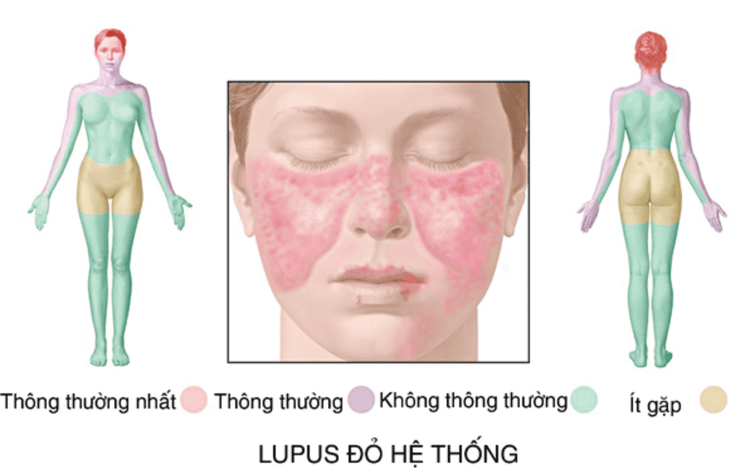
Cho đến nay, nguyên nhân hình thành bệnh lupus ban đỏ vẫn chưa có nghiên cứu chỉ rõ
Gender factor: Statistically, women are many times more likely to have the disease than men, especially men. Women during pregnancy or menstruation have a higher incidence. Age factor: Although lupus erythematosus has been confirmed at any age, people between the ages of 15 and 40 have a higher risk of developing the disease than other age groups. Genetic factors: Having a family member with lupus erythematosus is also at risk of developing this disease. People who often bask in the sun or are exposed to direct sunlight are also at high risk of this disease. People with infections or taking medicines for epilepsy, lowering blood pressure and antibiotics. Early symptoms of lupus erythematosus include:
Fatigue, pain in joints such as fingertips, toes, and knees Rash in places exposed to direct sunlight, this is a sign the most recognizable of this disease Fingers and feet turn pale, constrict when exposed to cold or when the weather turns cold Have sharp pains when breathing fast High blood pressure or kidney failure Mood swings, or anxiety , stress, forgetfulness, ...
3. How to treat lupus erythematosus?
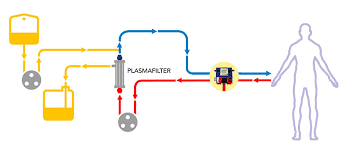
Để điều trị bệnh bác sĩ có thể chỉ định sử dụng phương pháp thay huyết tương để loại bỏ các kháng thể gây bệnh trong máu
Currently, with increasingly developed therapeutic techniques, to treat lupus erythematosus, doctors Your doctor may prescribe the use of plasma exchange to remove disease-causing antibodies from the blood. The method of plasma exchange is considered to be an effective and widely used method in the treatment of lupus erythematosus. This method is used when exacerbations of lupus erythematosus are life-threatening, the use of drugs is no longer effective, and there are many serious complications caused by the disease.
The number of plasma exchanges will be calculated as follows:
During the first week, 3 times of plasma exchange. In the next week, plasma exchange is 2 times and done for 2-3 weeks. Next, plasma exchange is 1 time a week and Take it for several weeks as directed by your doctor. However, not all patients are eligible to perform plasma exchange. In some cases, patients with low blood pressure must be treated to adjust blood pressure to normal values to perform this procedure. If the patient is showing signs of coagulopathy, care should be taken during the placement of the intravenous tube.
If events occur during plasma exchange that may have to be stopped, these events may be drug allergies, anaphylaxis or membrane coagulation.
Plasma exchange has been and is an effective and widely used treatment for lupus erythematosus, helping patients quickly get rid of the obsessions that this disease causes.
Vinmec International General Hospital with a system of modern facilities, medical equipment and a team of experts and doctors with many years of experience in medical examination and treatment, patients can rest assured to visit. examination and treatment at the Hospital.
Please dial HOTLINE for more information or register for an appointment HERE. Download MyVinmec app to make appointments faster and to manage your bookings easily.





